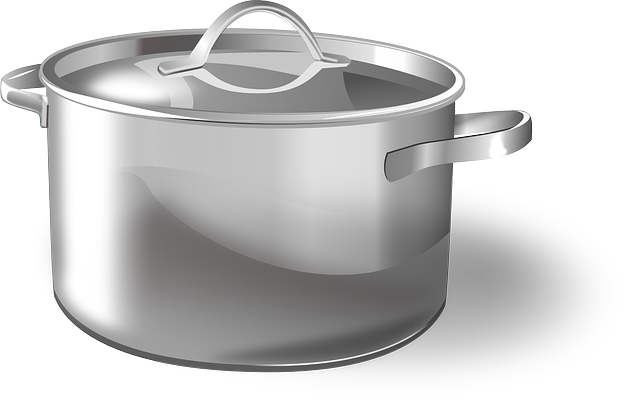In a functional kitchen for cooking, slip-resistant flooring is vital for safety and comfort. Traditional floors pose hazards in bustling kitchens with hot surfaces, slippery ingredients, and wet conditions. Opting for materials like ceramic tiles, natural stone, or specialized vinyl enhances safety, reduces slips and falls, and improves maneuverability. Regular cleaning and damage prevention ensure optimal conditions for long cooking sessions. This trend is popular among chefs and home cooks, offering both durability and modern aesthetics to match various themes.
In the heart of every home, the kitchen is a bustling hub where culinary creations come to life. However, this vibrant space can also present significant slip-and-fall risks, especially during long cooking sessions. Opting for slip-resistant flooring is a proactive step towards ensuring safety and enhancing the functionality of your kitchen. This comprehensive guide explores why kitchen flooring matters, delves into the benefits of slip-resistant options, offers installation tips, and showcases real-life transformations, empowering you to create a safe and stylish functional kitchen.
Understanding the Risks: Why Kitchen Flooring Matters During Cooking
In any functional kitchen designed for cooking, the flooring plays a critical role in maintaining safety and comfort during extended culinary sessions. Kitchens are often bustling spaces where hot surfaces, slippery ingredients, and wet conditions coexist, creating a unique set of hazards. Traditional flooring options may become treacherous when damp or oiled, leading to accidents that can range from minor slips to more severe falls.
Understanding the risks associated with kitchen flooring is essential for creating an environment conducive to focused cooking. Opting for slip-resistant flooring materials not only enhances safety but also provides a stable surface for precise movements, ensuring chefs and home cooks can confidently navigate the space while handling hot pots, sharp knives, and slippery substances without worrying about unexpected mishaps.
The Benefits of Slip-Resistant Flooring in a Functional Kitchen
In a functional kitchen designed for cooking, slip-resistant flooring offers significant advantages that enhance safety and efficiency. The smooth, consistent surface reduces the risk of slips and falls, ensuring chefs can move around with confidence while preparing meals. This is especially crucial during long cooking sessions, when fatigue might impair balance. By opting for slip-resistant floors, you create an environment where culinary professionals can focus on crafting delicious dishes without worrying about potential hazards.
Furthermore, these floors provide better grip, allowing cooks to easily maneuver with pots, pans, and ingredients scattered across the workspace. This stability not only prevents accidents but also promotes better posture, reducing the risk of muscle strain and injuries commonly associated with kitchen work. In a bustling kitchen, where tasks are dynamic and quick, slip-resistant flooring becomes an essential element for maintaining a safe, productive, and enjoyable functional cooking space.
Choosing the Right Material: Types of Slip-Resistant Options
When designing or updating a functional kitchen for cooking, selecting the right flooring is key to ensuring safety during long hours in the kitchen. One critical aspect to consider is slip-resistance, especially if your space sees high foot traffic and potential spills. The good news is that numerous options offer both style and functionality.
Various materials, including ceramic tiles, natural stone, and specialized vinyl, are popular choices for their durability and grip. Ceramic tiles, for instance, provide excellent traction and can withstand hot dishes without warping. Natural stones like granite or marble add a luxurious touch while remaining slip-resistant. Specialized vinyl flooring is another versatile option, offering comfort underfoot and easy cleaning, making it ideal for busy kitchens. Each material has unique characteristics, so choosing the right one depends on personal preference, budget, and the overall aesthetic you wish to achieve in your functional kitchen for cooking.
Installation and Maintenance Tips for Longevity and Safety
When installing slip-resistant flooring in your functional kitchen for cooking, ensure proper placement and alignment to avoid accidents. Regular cleaning is paramount; use non-abrasive cleaners and mops to maintain the floor’s integrity. Avoid placing hot objects directly on the surface to prevent damage and preserve its anti-slip properties. For instance, use heat-resistant mats underneath pots and pans.
Maintenance includes repairing any chips or damaged areas promptly. Consider resealing or polishing the flooring periodically as per the manufacturer’s guidelines. This routine care will ensure your slip-resistant floor remains in top condition, providing a safe surface for long cooking sessions and preventing unnecessary accidents in your bustling kitchen.
Real-Life Examples: Success Stories of Safe and Stylish Kitchens
In real-life, many professional chefs and home cooks have benefited from adopting slip-resistant flooring in their kitchens. These kitchens range from bustling commercial eateries to family homes where cooking sessions can last for hours. By choosing durable, non-slip tiles or vinyl flooring, these kitchens not only enhance safety but also contribute to a stylish, modern aesthetic. For instance, a renowned chef’s kitchen features a seamless, easy-to-clean floor that withstands the constant foot traffic and hot equipment, ensuring every movement is secure. Similarly, a family’s functional kitchen for cooking boasts a vibrant, slip-resistant design that complements its rustic theme while providing much-needed traction during baking sessions or meal preps.
When it comes to creating a safe and functional kitchen for cooking, slip-resistant flooring is an indispensable consideration. By understanding the risks associated with standard flooring and exploring the benefits of specialized options, homeowners can make informed decisions that enhance both safety and aesthetics. With various materials available, proper installation and maintenance, and inspiring real-life examples, there’s no better time to invest in a durable, slip-resistant surface for your culinary hub.
